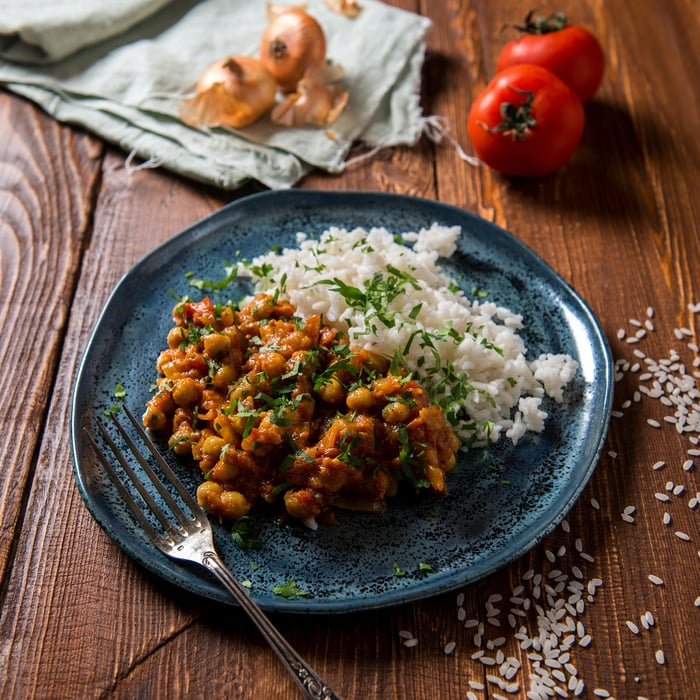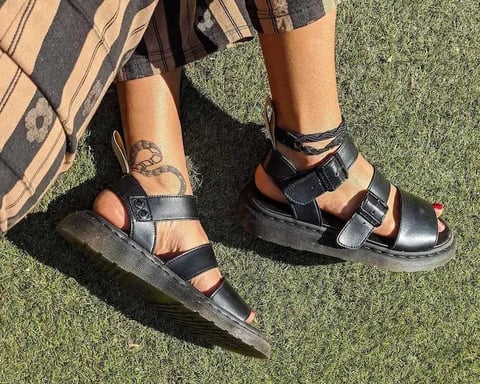 Photo: Anthony “Mogli” Maureal
Photo: Anthony “Mogli” Maureal
Chef Reina Montenegro probably wouldn’t have gone vegan if it hadn’t been for her daughter. Her battle with a persistent skin condition sent Montenegro in search of a culprit. She soon found it—in dairy. That was six years ago, and the chef hasn’t looked back.
Montenegro was born in Dumaguete City on the Philippines Island of Negros. She was raised on traditional Filipino food.
“Some of my favorite dishes growing up were Tocino (a sweet and savory pork dish), Lechon Kawali (deep-fried pork belly), and Lumpia Shanghai (mini meat eggrolls),” she told Ethos over email.
See also: Plant-based Bangkok Food Guide
Perfecting Filipino food
A self-taught chef, Montenegro worked as a personal chef and caterer in the Bay Area—she moved there in 1997—before opening her own restaurants that included the now-closed Nick’s Kitchen in Daly City, Nick’s On Grand in South San Francisco, and Nick’s On Mission in San Francisco.
Despite a career in the kitchen, creating vegan versions of the dishes of her youth wasn’t an easy task.
“There are dishes on my menu that took me 2 to 6 months to perfect,” she says. “But the time spent is all worth it when you can have something you’ve been missing and have it without harming animals.”
Part of the road to her success—Montenegro sells her prepared meals now out of a storefront in Brisbane, Calif., just a few minutes south of San Francisco—is in the realization that she could use the same flavors from herbs, spices, and vegetables, to get the results she was after.
 Photo: Dragne Marius
Photo: Dragne Marius
“The most challenging is always the texture of meat substitutions that I use, so I manipulate them, cook them in various ways to achieve the texture that I am looking for,” Montenegro says. “The surprising part is when the taste is easily achievable and on point.”
Filipino food also features a lot of local vegetables including the moringa plant, ampalaya (bitter melon or bitter gourd), and Upo (bottle gourd). Montenegro says these vegetables “add flavor and complexity” to the dishes that allow her to achieve the same flavors of her youth.
While the vegetables, herbs, and fruits add flavor and depth, traditional Filipino dishes are typically made with lots of pork and seafood, which can make vegan Filipino food hard to find, Montenegro says. But she’s finding her way to novel ingredients that can mimic the taste and texture of meat seamlessly. Montenegro was among the first U.S. chefs to work with the “vegan Spam”, Hong Kong’s OmniPork, earlier this year.
See also: Helping the needy in Vietnam with plant-based food
Going meatless
Montenegro says people are changing their diets as more options become available, even in her meat-loving Philippines. “People are seeing why going vegan is a win-win for everyone. Even the hard-core meat-eating Filipinos are now questioning why we need meat in our diet,” she says.
With plans to expand her service nationally, Montenegro says she wants to be known as “the gateway” for people who want to eat vegan—either for their health or the planet—but are maybe too nervous about giving up their favorite dishes. She says 65 percent of her customers aren’t vegan.
 Photo: Maddi Bazzocco
Photo: Maddi Bazzocco
But customers keep coming back “because they simply think it’s really good food,” she says.
Her meal offerings run the gamut including vegan takes on traditional Filipino dishes. But she also serves up global flavors like Korean Bulgogi, Adobo Chicken, and Crab Cakes. There are Impossible Burgers and Fried Chicken sandwiches, too.
See also: The Best Vegan Food in Canggu, Bali
Healthy eating, healthy planet
Most customers of Montenegro’s are eating vegan for their health, and she can relate—it was also her entry to the diet. But she’s hopeful they stick with it for the planet. This is particularly important for the Philippines where climate change is already causing droughts, sea-level rise, and poses threats to vulnerable communities, including Indigenous peoples and women. And her current home, the Bay Area, is also feeling the impact as Northern California has seen record wildfires and droughts in the past decade.
 Photo: Megan Thomas
Photo: Megan Thomas
“A lot of people see that and yet turn a blind eye because they hold on to tradition and what they’ve always believed in,” Montenegro says. “But I hope that people do see that this is real and that each person can make a huge impact just by eliminating meat and dairy from their diets.”
There has never been a better time to make the diet shift, says Montenegro; the climate and health crises bring new threats to the world every day.
“It’s certainly changing and it’s changing fast,” she says.
Learn more at Chef Reina’s website.
This article was first published on the-ethos.co
[






